Prehistoric Kitchen


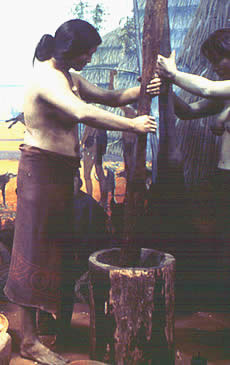
Just as we use blenders, Cuisinarts, and other food processors today, Indians used a variety of tools to prepare their foods for cooking. Made of stone or wood, these simple tools required a lot of human energy to power them, in order to crush, pound, and grind the thousands of hard seeds, grains, or nuts needed to make flour or meal. As you will learn below, one of the tools was a special Indian version of a "nut cracker." (This has nothing to do with the doll or the play, by the way.)
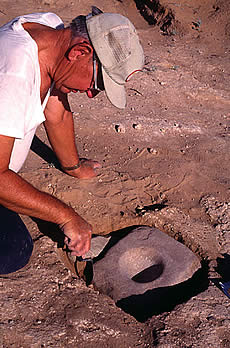
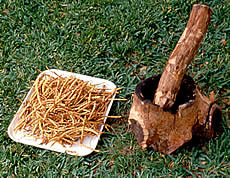
Mortars and pestles may have been the first such tools used by prehistoric peoples. A mortar is the "bowl" part of the tool, where the food was placed to be crushed. Mortars could be as simple as a hole or depression in a flat rock. Other mortars were made of a hollowed-out log. To complete this "machine," an instrument called a pestle was needed, either a long rounded stone or a wooded stick with a rounded end. Many of the wooden mortar and pestles resembled butter churns. Regardless of the shape or size of the processing tools, the food—hard nuts and seeds—could be pounded to a pulp or meal (like cornmeal or flour) and could then be mixed and cooked into griddle cakes or flat bread, or added to meat or soups.
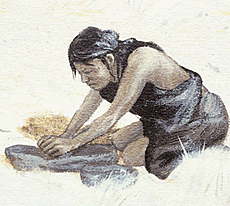
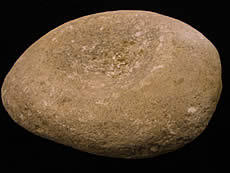
The mano and metate also were used for grinding seeds and nuts such as acorns into a powdery meal. Made of flat, rough stone, metates were used as a grinding slab. Although not as deep as the mortar, some metates have a surface that dips slightly inward, like a shallow trough. The mano is the hand piece, a rounded stone which was rubbed back and forth, or in a circular motion, over nuts or seeds within the metate. Dried meat was also ground and mixed with the seeds and nuts to make a food called pemmican.

One of the most compact tools the Indians used was their version of a "nut cracker." Called "nutting stones," these are small stones with a little dimple or depression in their center. Indian cooks would place a nut—such as a pecan—in the small dimple. They would then crack the nut with another stone and pick out the nutmeats from the shell. It was not like the nutcrackers we use today, but they worked!
Nature's Grocery Store Blowing in the Wind Food Wheel A Thorny Subject Hot Rock Cooking
